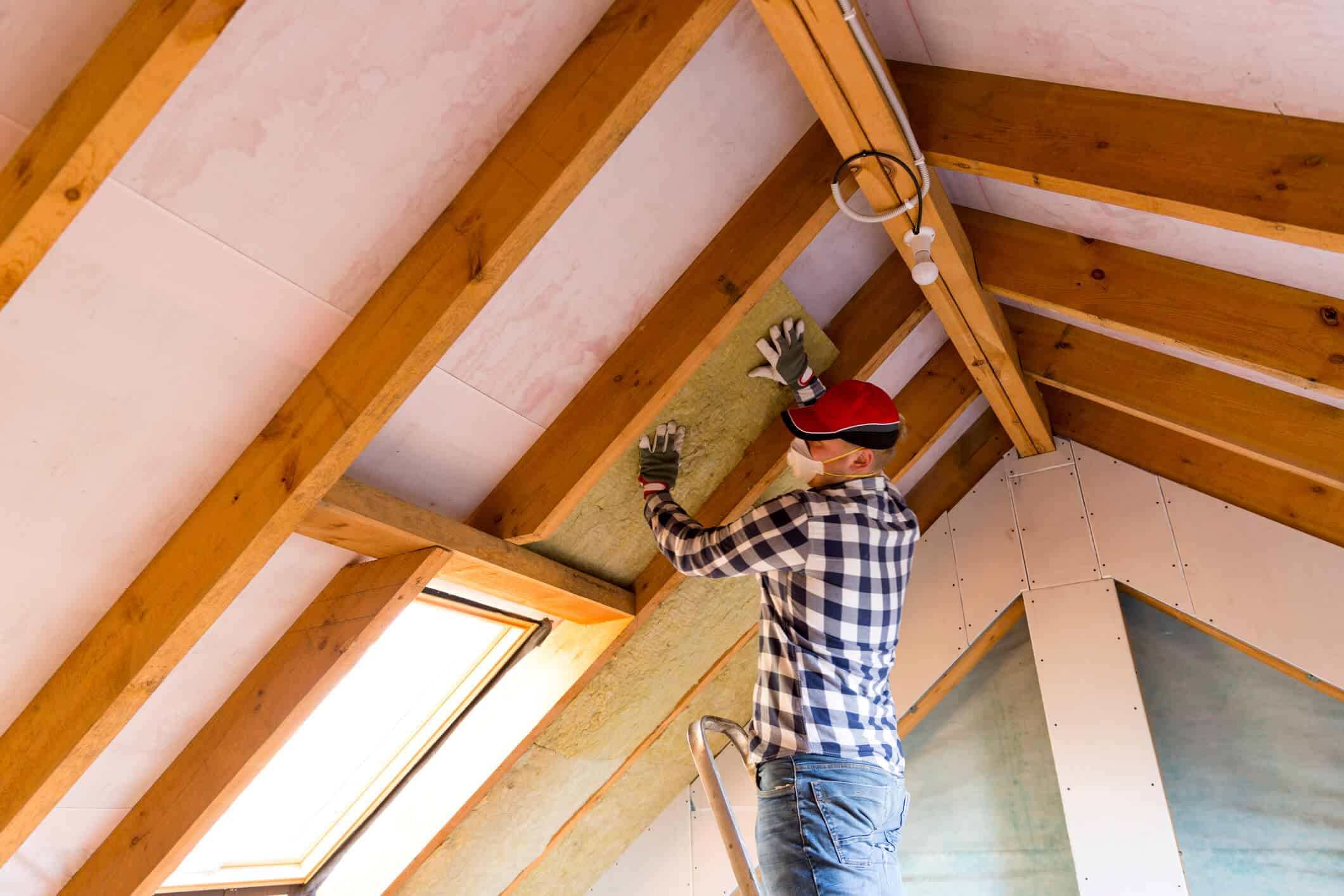Keeping your home warm in the winter, cool in the summer, and energy-efficient all year-round is important. The key factor in achieving this is a properly insulated home. You may think of wall insulation as what ensures your home has adequate temperature control throughout the seasons, but your attic insulation is important too.
You may have a full-height, completely accessible attic in your home, or you may have something closer to a crawl space, all attics are different. What they should all have in common is a healthy layer of insulation that prevents heat loss in the winter and prevents too much heat from getting into the house during the summer.
R-Value
You need a certain amount of R-value in your attic, which is a rating given to insulation based on how well it reduces heat loss. Different areas of your home require different amounts of R-value to adhere to building codes and keep you comfortable. Attics should be insulated with an R-value of 50 or 60 for optimal heat retention, but your climate and region may dictate a different value. You can layer lower R-value insulation to achieve a higher value, as required. Different types of insulation come with different price tags, as well as different qualities. Review and compare all these qualities before choosing which is best for your home.
Insulation
Blown insulation, which is a loose style, and batt insulation is the pink fluffy layered insulation that most people are familiar with. These are the two most common types of insulation to find in an attic, and both are easy to add to if you find that your attic is under-insulated. A home inspector can tell you whether your attic is adequately insulated or not, and it is something you should inquire about when purchasing a home. Investing in sufficient insulation now will save you money on your heating and cooling costs later.
Reason to Remove Insulation
There are a few instances when you will need to remove and replace insulation in your attic. The most common reasons are water damage, pest infestation and vermin. Let’s look at these issues more closely.
Water Damage
A leaky roof that goes unnoticed can result in mold growing in your insulation. A flash leak that is caught quickly and repaired will allow your insulation to dry properly and shouldn’t be a problem, however, if you have an ongoing problem or a severe leak that causes widespread damage, you’ll need to replace your insulation. Mold can grow inside insulation easily and be difficult to spot, particularly if your attic space is not easy to get into. Mold and mildew have a telltale musty odor that will be a dead giveaway, whether or not you can see physical signs of it.
The major issue with mold is that it affects the air quality in the home, and if left unchecked in a humid area, like an attic, it can grow wildly out of control and infiltrate other areas of your home. Mold loves porous materials like wood, which means roof trusses, joists, and plywood sheathing are excellent growth mediums.
Pests
Termites may nest and hide inside or under insulation. An attic covered in a layer of insulation shields them well from plain site. If your home has suffered from termites or carpenter ants before, having the insulation inspected in your attic is important. Not only will you need to replace anything that was damaged, but you’ll also want to remove anything that appears to have been infiltrated to ensure you are removing any eggs the insects left behind.
Vermin
Rodent’s love nothing more than burrowing into the warmth of insulation. It is the perfect winter hideaway that they can easily manipulate, chew through, and create a highway of tunnels. Rodent urine and feces can have serious consequences for your health and cause damage to plywood and floor joists. If you don’t have plywood between your insulation and your ceiling, then the only thing separating you from them is some drywall. Drywall is porous so any moisture left on it, like urine, will be absorbed and can result in mold growth and visible staining on the interior of the home.
TAP Insulation
Thermal Acoustical Pest (TAP) insulation is a revolutionary product that is perfect for attics and ticks all the boxes in terms of quality. It’s eco-friendly, being comprised of mostly recycled material. It is pest-proof as it features boric acid which eliminates pests. It is highly fire-resistant and holds up superiorly to mold and mildew. This blown type of insulation also has acoustic control value, assisting in reducing noise transference.
Insulation Removal and Installation
No matter what type of insulation your home uses currently, it can be a real pain and mess to remove or add to on your own. Batt insulation is made of fiberglass that can be highly irritating to the skin and blown insulation can be very messy. When handling insulation, you should wear appropriate clothing and personal protective equipment to shield you from exposure to the tiny, irritating, insulation fibers and from breathing in any contaminants it might be harboring, like mold or rodent feces.
Alliance Environmental for Your Project
Using professionals to repair or remove your attic insulation (or bring it up to code) is the best way to ensure the job is done right. At Alliance Environmental Group our team has over 100 years of combined experience in removal and remediation services. We take the health and safety of our clients as seriously as we take the health and safety of the environment, which is why we recommend TAP Insulation for your attic.
Our Team Heat division is perfectly suited to assist you with your attic, whether it’s a simple removal, or you need a removal and entirely new insulation, on top of tackling a pest problem – we have you covered. Our non-invasive heat method is sure to rid you of pests and is safe for your home, the environment, and your family. Request a Free Quote today.

